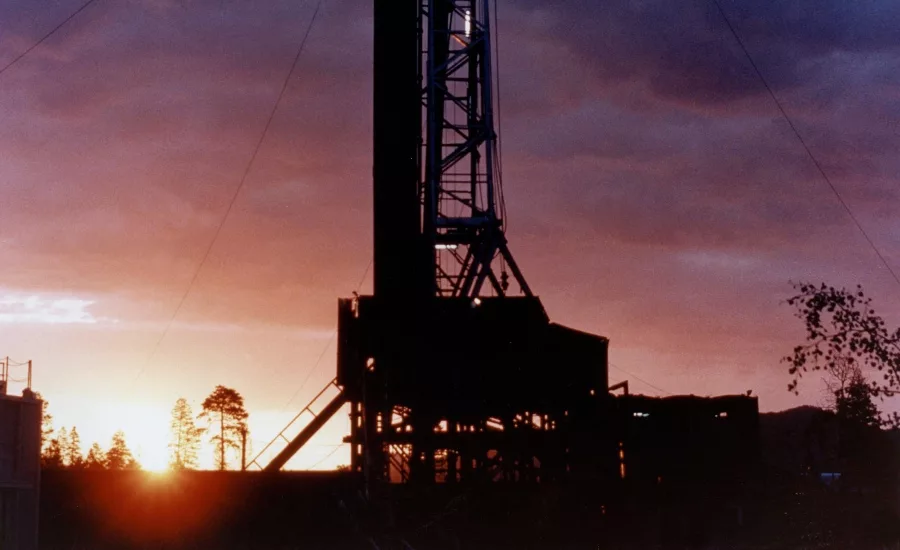What is the 30-Year Trajectory for Drilling Jobs?
Think About Demand as You Consider a Future for You, Your Company

Geothermal is a strong contender for drilling growth areas, but it starts from a small baseline of just .0024% of the U.S. consumption pie.
Source: U.S. Department of Energy
In the northern end of Oakwood Cemetery in Saginaw, Michigan, sits the grave of a driller, my great-great-grandfather Alva W. Johnson.
“In his early life Mr. Johnson engaged in the coal business and was widely known in southeastern Ohio where he leased and drilled coal over a wide area.”
That nugget comes from a 1948 obit I found recently, this one from a newspaper in Jefferson County, Ohio, a few counties east of Guernsey County, where Johnson grew up.
I had known for some time through family research that his work related to coal, but I hadn’t seen references to drilling specifically. Now I picture him drilling blastholes with something like an Ingersoll rock drill (invented in 1871), a steam-powered drill so innovative that a couple of men could now drill dozens of feet in a 10-hour workday.
Another obit, this one from the Saginaw News, says he came to the area in 1889 as a prospector for Will’s Creek Coal Company. Rural Saginaw County produced a lot of tonnage as coal boomed in the years during and after the Civil War. From 1860 to 1890, coal consumption in the U.S. tripled to about 60% of our energy mix. In essence, he tied his fortunes to major generational changes in the energy sector.
It appears to have worked out. By 1900, at age 39, he’s moved on from prospecting. He bought 40 acres and brought his wife, Lizzie, and now three children up from Ohio. The train line that shipped out all that tonnage runs along the west side of their farm. Coal and U.S. demand for it helped him buy land and pursue, I suspect, a comparatively easier life farming.
Now, think about our current energy mix. If you had to put your chips on an energy source to see a tripling of demand between now and 2051, what would you choose? The answer could clarify the types of jobs you consider bidding. Supply rises to meet demand.
The U.S. Energy Information Administration says coal now makes up about 10% of our energy mix — a number that continues to dwindle. Coal probably isn’t your answer. Oil and natural gas each make up about a third of the consumption pie. I doubt either would triple. I’d put my money on renewables, like geothermal. Though geothermal today makes up a measly .0024% of the consumption pie, it wouldn’t surprise me to see that number jump to 5% or even 10% in 30 years. That may not sound like much, but that kind of growth creates plenty of work. Breakthroughs in downhole technologies that can better withstand high pressures and temperatures also expand geothermal’s geography, feasibility and potential scale.
My point is not to lobby for geothermal (though I do consider myself bullish on that sector). I want to get you thinking about today’s generational changes in the energy sector. Ol’ man Johnson just got lucky. He grew up in coal country during coal’s ascendancy. In 2021, you can look around and make an informed decision for your career, future, industry and family.
You’ve chosen drilling, so put some thought into the industry’s 30-year trajectory. What growth area do you link your future to? In 1880, you’d choose coal. Today, maybe geothermal. Maybe geotech. Hydroelectric now makes up just under 3% of the consumption pie, but companies increasingly need drillers to help them assess the health of those dams. Maybe something else. I just urge you to think about it. Where can you serve as the supply meeting the rising demand? Once you have an answer, grow your career in drilling or your drilling business toward those areas.
What do you think? What sector of drilling would you bet on for 2051? Let us know. Send an email to verduscoj@bnpmedia.com.
Stay safe out there, drillers.
Step Up to the Mic
Working on an interesting project or have industry wisdom to share? Email verduscoj@bnpmedia.com to be considered for a guest spot on Drilling In-Site.
Looking for a reprint of this article?
From high-res PDFs to custom plaques, order your copy today!

